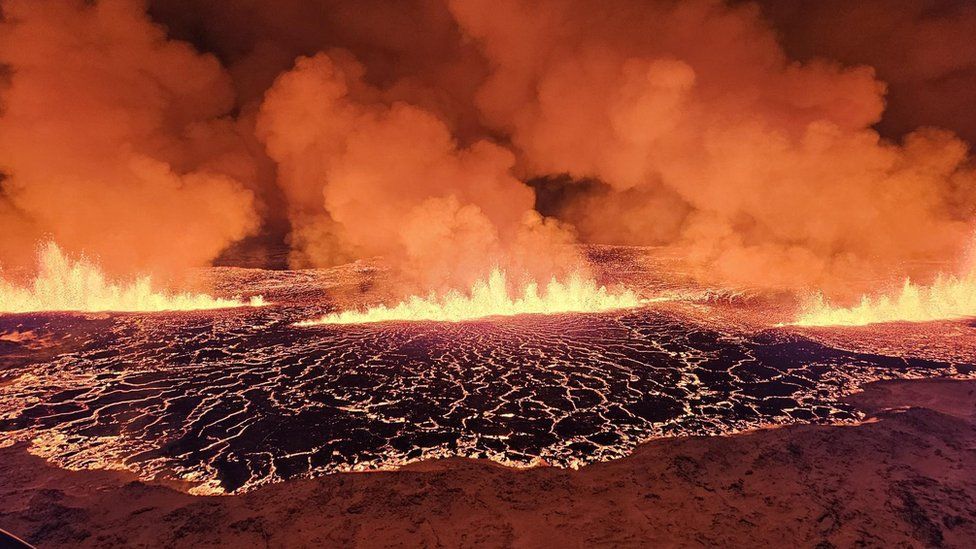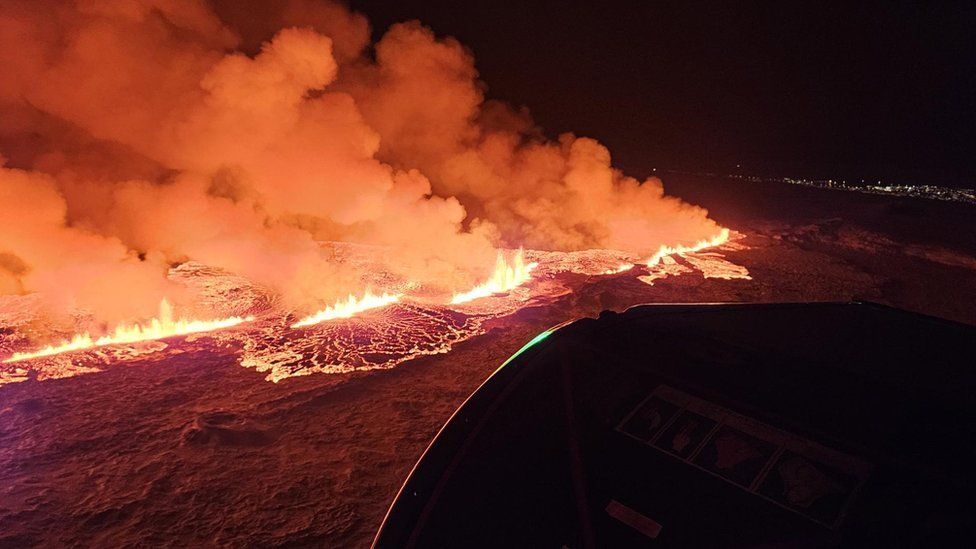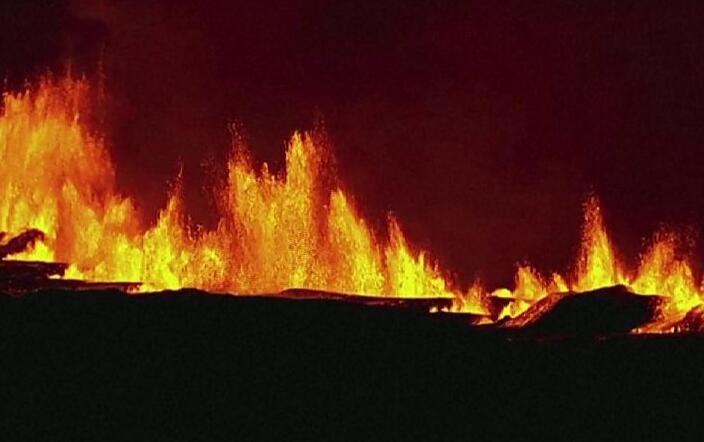Iceland volcano erupts on Reykjanes peninsula
A volcano has erupted on the Reykjanes peninsula of south-west Iceland after weeks of intense earthquake activity.
About 4,000 people were earlier evacuated from the fishing town of Grindavik and the nearby Blue Lagoon geothermal spa was closed.
The eruption started north of the town at 22:17 local time (22:17 GMT), the Icelandic Met Office said.
The region around the capital Reykjavik has been experiencing an increase in earthquake activity since late October.
Images and videos posted on social media showed lava bursting from the volcano just an hour after an earthquake swarm, or seismic events, were detected.
A coastguard helicopter has been sent to the area to confirm the exact location and size of the eruption.
The Met Office said that the eruption was located about 4km (2.5 miles) north-east of Grindavik and the seismic activity was moving towards the town.
The length of the crack in the volcano is about 3.5km, with the lava flowing at a rate of around 100 to 200 cubic metres per second, it added.
It said that this was many times more than in previous eruptions on the Reykjanes peninsula in recent years.
A senior police officer at the Civil Defence told national broadcaster RUV the eruption had happened quickly and appeared to be “quite a large event”.
Vidir Reynisson said the lava appeared to be flowing in all directions from a large crack in the volcano.


“The jets [of lava] are quite high, so it appears to be a powerful eruption at the beginning,” he said.
The eruption can be seen from Reykjavik, which is about 42km north-east of Grindavik.
One eyewitness in the city told the BBC that half of the sky in the direction of Grindavik was “lit up in red”.
He said smoke could also be billowing into the air, with police warning people to stay away from the area.
Iceland’s Prime Minister Katrin Jakobsdottir said defences recently constructed would have a positive effect.
She said her thoughts were with the local community and she was hoping for the best despite the “significant event”.
President Gudni Johannesson said safeguarding lives was the main priority but that every effort would be made to protect structures too.
In April 2010, the Eyjafjallajokull volcanic eruption caused the largest closure of European airspace since World War Two, as a result of an extensive ash cloud.
Losses were estimated at between 1.5bn and 2.5bn euros (£1.3-2.2bn; $1.6-2.7bn).
